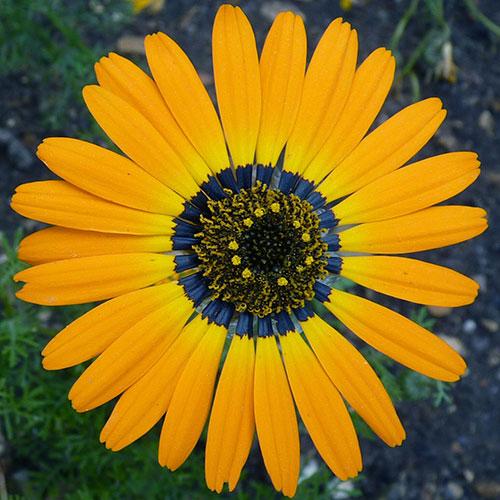
Submitted by Helen C. Scott on Fri, 20/10/2017 - 13:10
In a new paper out this week in Nature, Beverley Glover’s group explore the role that nanoscale surface sculpturing of the petal plays in optical properties of flowers and their interactions with pollinators. They report that fine scale ridges that generate scattered light in the blue-UV parts of the spectrum have evolved convergently in most of the main groups of flowering plants.
The work is based on a multidisciplinary collaboration with colleagues from the Chemistry Department, the Royal Botanic Gardens Kew and the Adolphe Merkle Institute in Switzerland.
In order to explore how common the use of cuticle patterning to produce colour was in the flowering plants, the team used the living collection at Cambridge University Botanic Garden to search for flowers which produced a measurable angle-dependent colour signature. They identified flowers with nanoscale cuticular ridges that generate colour in almost all branches of the angiosperm phylogenetic tree. What was surprising, was that all the different flowers analysed produce a very similar optical signal – they scatter light in the blue-UV part of the spectrum, over a specific range of angles.
The team then made artificial surfaces which replicate the blue halo and found that bees could easily see them, even on top of pigment backgrounds (such as yellow) which make them invisible to the human eye. They also discovered that the blue halo had a significant effect on foraging efficiency, shortening the time it took a bee to find flowers. Given that insect vision is shifted towards the blue-UV relative to human vision, the study concludes that the blue halo has evolved convergently as an alternative way for flowers to produce an optical signal that is highly visible to insect pollinators.
Moyroud E, Wenzel T, Middleton R, Rudall PJ, Banks H, Reed A, Mellers G, Killoran P, Westwood MM, Steiner U, Vignolini S, Glover BJ. (2017) Disorder in convergent floral nanostructures enhances signalling to bees. Nature.
